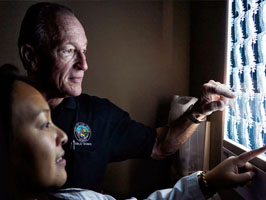Microdiscectomy, also sometimes called microdecompression or microdiskectomy, is a minimally invasive surgical procedure performed on patients with a herniated lumbar disc.
The procedure is done under general anesthesia. You will be unconscious during the entire procedure and unable to feel anything.
After a microdiscectomy, the typical time to a full recovery is about six weeks.
Spinal surgery once meant large incisions, long recovery periods, and painful rehab. Fortunately, surgical advances like the microdiscectomy procedure have improved the process.
Microdiscectomy, also sometimes called microdecompression or microdiskectomy, is a minimally invasive surgical procedure performed on patients with a herniated lumbar disc. During this surgery, a surgeon will remove portions of the herniated disc to relieve pressure on the spinal nerve column.
BENEFITS
Who Benefits from Microdiscectomy?
According to the Spine Institute of San Diego, a microdiscectomy procedure is up to 95 percent effective at eliminating sciatica pain caused by disc herniation. Sciatica is a pain condition caused by compression of the spinal nerve. This compression is most often the result of a herniated lumbar disc.
As the hernia develops and the damaged tissue extends into the spinal column, it pushes on the nerves. This causes the nerves to send pain signals to the brain. The pain is interpreted to be coming from the legs.
Most cases of sciatica will heal naturally without surgery in a few weeks. If the pain from sciatica lasts more than 12 weeks, you may benefit from a microdiscectomy.
PROCEDURE
How Is the Surgery Performed?
The goal of a microdiscectomy is to remove the disc material placing pressure on the nerves. The procedure is done under general anesthesia. You will be unconscious during the entire procedure and unable to feel anything. The procedure is performed with the patient lying face down. The process goes as follows:
A 1- to 1 1/2-inch incision will be made directly over the affected disc.
A lighted microscope is used to help your surgeon see the affected area.
The surgeon may remove a small portion of bone that protects the root nerve.
With a scissor-like tool, your surgeon will remove the damaged herniated tissue, relieving the pressure on the nerve.
The incision is closed with sutures.
The patient is usually discharged the same day or the next morning.
The spinal nerve now has the space it needs inside the spinal column, so any pain caused by pinching on the nerve should stop.

